If you’re seeking bearded dragon poop images, you’ve come to the right place.
While it may seem unusual to monitor your pet’s bathroom habits, understanding a bearded dragon’s fecal matter can offer crucial insights into their health.
In this post, we will embark on a visually enlightening journey, examining bearded dragon poop images & deciphering their meanings.
The objective of this guide is not only to showcase ‘what healthy bearded dragon poop looks like‘ but also to highlight the key points & knowledge needed for accurate interpretation.
Whether you’re a beginner or a seasoned reptile enthusiast, our aim is to be your go-to guide for understanding the significance behind those seemingly ordinary bearded dragon droppings.
Let’s first take a look at what does a healthy bearded dragon poop look like.
Bearded Dragon Poop Images

If you’ve ever wondered, “What does healthy bearded dragon poop look like?” this is an example. The expression on his face! He appears proud of himself.
Image Source & Credit: u/nanuthecat (Contact us For Content Removal or Proper Credit Where It’s Due)

Sometimes, your beardie might drop a load as massive as the one in the picture!
If your little buddy is eating healthy, no need to fret! Just stick to the expert-recommended bearded dragon insect diet and steer clear of the ones with too much moisture.
Every now and then, we come across a bearded dragon struggling to poop for days, and then suddenly letting out a colossal load!
Image Source & Credit: u/ejk710 (Contact us For Content Removal or Proper Credit Where It’s Due)
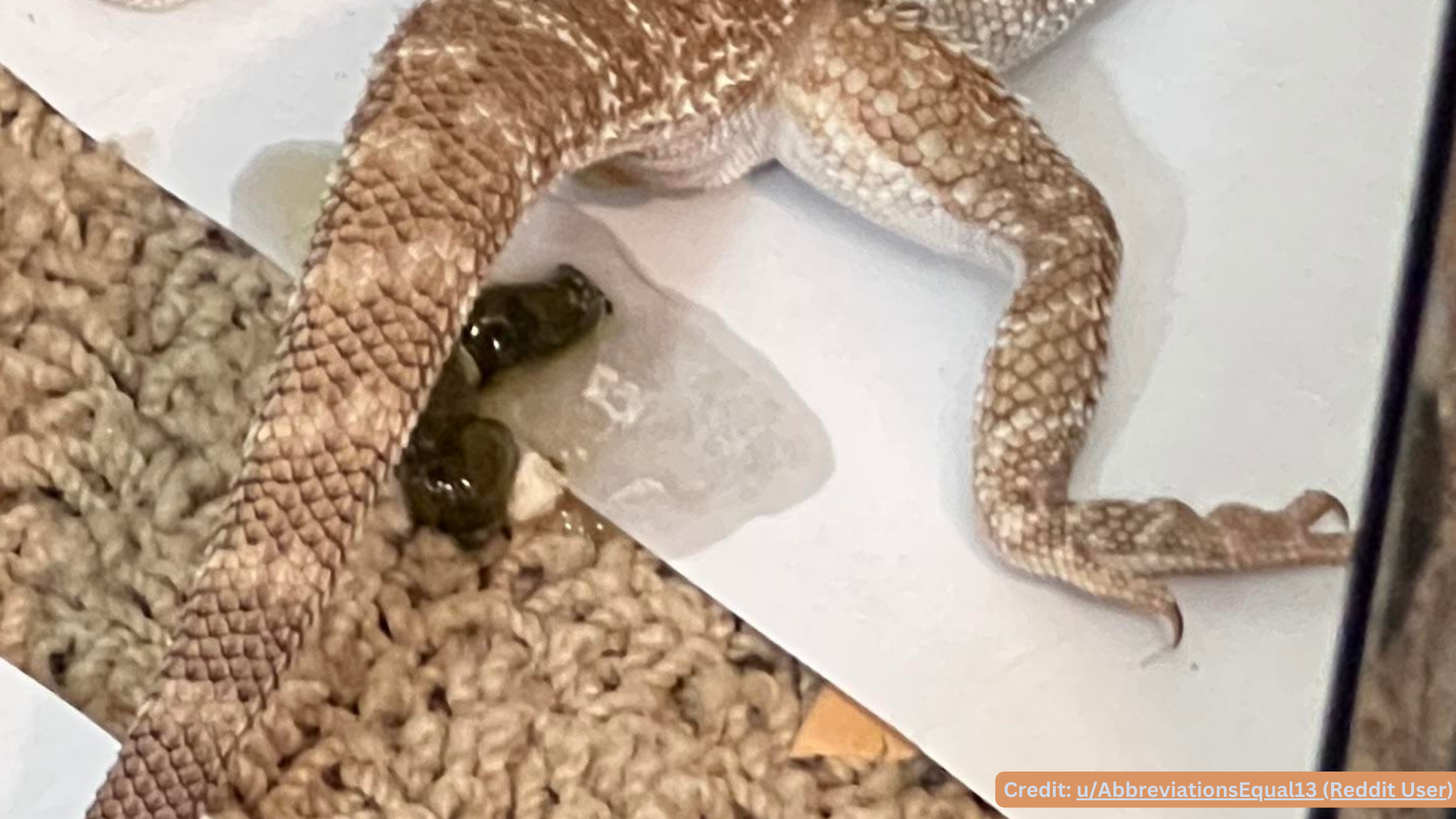
As depicted in the image, the poop looks normal. However, we can notice a white pearl-colored urate accompanied by expelled water.
This is commonly observed when you acquire store bearded dragon for the first time, and the pet defecates for the first time in a new environment.
In such cases, keep a vigilant eye on your pet. Frequently, an excessive collection of water in the beardie’s cloaca occurs when an abundance of moisture-rich greens, vegetables, or insects is fed.
Additionally, this could also result from your pet consuming a significant amount of water during a bath.
Image Source & Credit: u/AbbreviationsEqual13 (Contact us For Content Removal or Proper Credit Where It’s Due)

You can expect this kind of feces if your beardies poop for the first time in a new home. As evidenced by the presence of a white component, red dye is also visible, resembling blood.
Feeding your bearded dragon red-colored foods such as carrots, bell peppers, etc., may result in bearded dragon urate red. Try just offering some greens next time and seeing how it turns out.
If it’s still red, it can be blood. Hence, when you spot bearded dragon blood in urate, you need to contact the vet.
Image Source & Credit: u/velocitygreener (Contact us For Content Removal or Proper Credit Where It’s Due)

In most cases, red is just concentrated urates, suggesting dehydrated bearded dragon.
The poop/urate in the image seems slightly reddish, which could also be a consequence of an excess of red-colored food.
Over time, you’ll get used to it as it’s a fairly normal thing to notice.
My advice would be to offer them a diet primarily consisting of moisture-rich greens during the next feeding to observe any changes.
Alternatively, bath them to provide an easy drinking opportunity
Image Source & Credit: u/sullivan1456 (Contact us For Content Removal or Proper Credit Where It’s Due)

The poop pic you see isn’t normal! I recommend having his stool sample examined for pinworms in bearded dragons poop.
Another concern to take into account is coccidia bearded dragon poop. It’s important to get your beardie checked & diagnosed properly.
Sometimes, this kind of parasitic infestation becomes severe, costing lives in reptiles.
Image Source & Credit: u/ForGoomy (Contact us For Content Removal or Proper Credit Where It’s Due)

Just like with any other pet reptile, a bearded dragon poops when out of cage due to various reasons. Some of these reasons may include:
- Your pet feeling better outside its cage, triggering this response.
- The outdoor environment is warm, stimulating your pet’s digestive system.
- The unfamiliar environment puts stress on bearded dragons or makes them anxious, causing them to feel the urge to defecate.
- Marking territory, a natural behavior for reptiles.
- The timing of taking your beardie out of its cage coincides with regular bowel movements.
- Excessive hydration can also lead to it. Conversely, dehydrated bearded dragon poop may serve as an indicator of dehydration. Watch Out for Signs Of Dehydration In Bearded Dragons.
Image Source & Credit: Depressed_milkshake (Contact us For Content Removal or Proper Credit Where It’s Due)
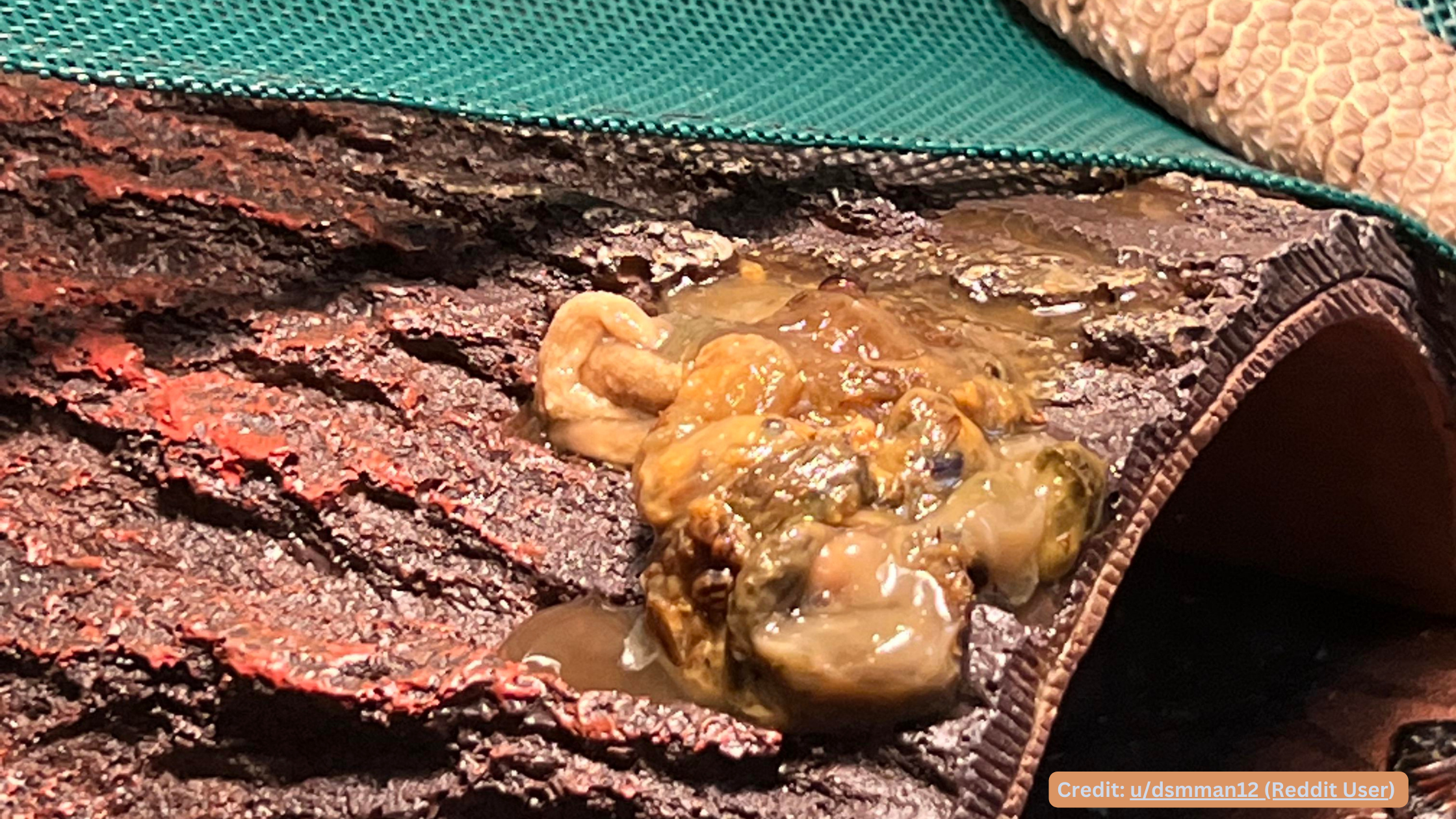
In the image, you can observe some undigested food in bearded dragon poop (I believe they are “Bugs”), accompanied by diarrhea. This highlights an error in their setup, potentially related to lights or a basking spot. Some common issues include:
- Dietary Issues: Optimal treats include gut-loaded live bugs for bearded dragons. Additionally, avoid offering heavy meals.
- Inadequate Diet or Malnutrition: Choose dragon-friendly foods such as veggies, fruits, insects, worms, treats, & supplements. Read about the best calcium supplement for bearded dragons that I’ve found so far.
- Parasitic or Bacterial Infections: Parasites or bacterial infections can disrupt normal digestion. Refer to information on Bearded Dragon Parasite Poop here.
Image Source & Credit: u/dsmman12 (Contact us For Content Removal or Proper Credit Where It’s Due)

This particular poop texture is generally fine and often occurs when you overlook how many dubia roaches for bearded dragon is healthy.
So, you might be wondering, ‘Are dubia roaches good for bearded dragons?’
Well, they’re definitely one of the best and safest options, but too many dubia roaches for bearded dragons, especially if they’re too big, can be tough to digest. Learn more here: what size dubia roaches for bearded dragon
Image Source & Credit: u/CommunicationFun7010 (Contact us For Content Removal or Proper Credit Where It’s Due)
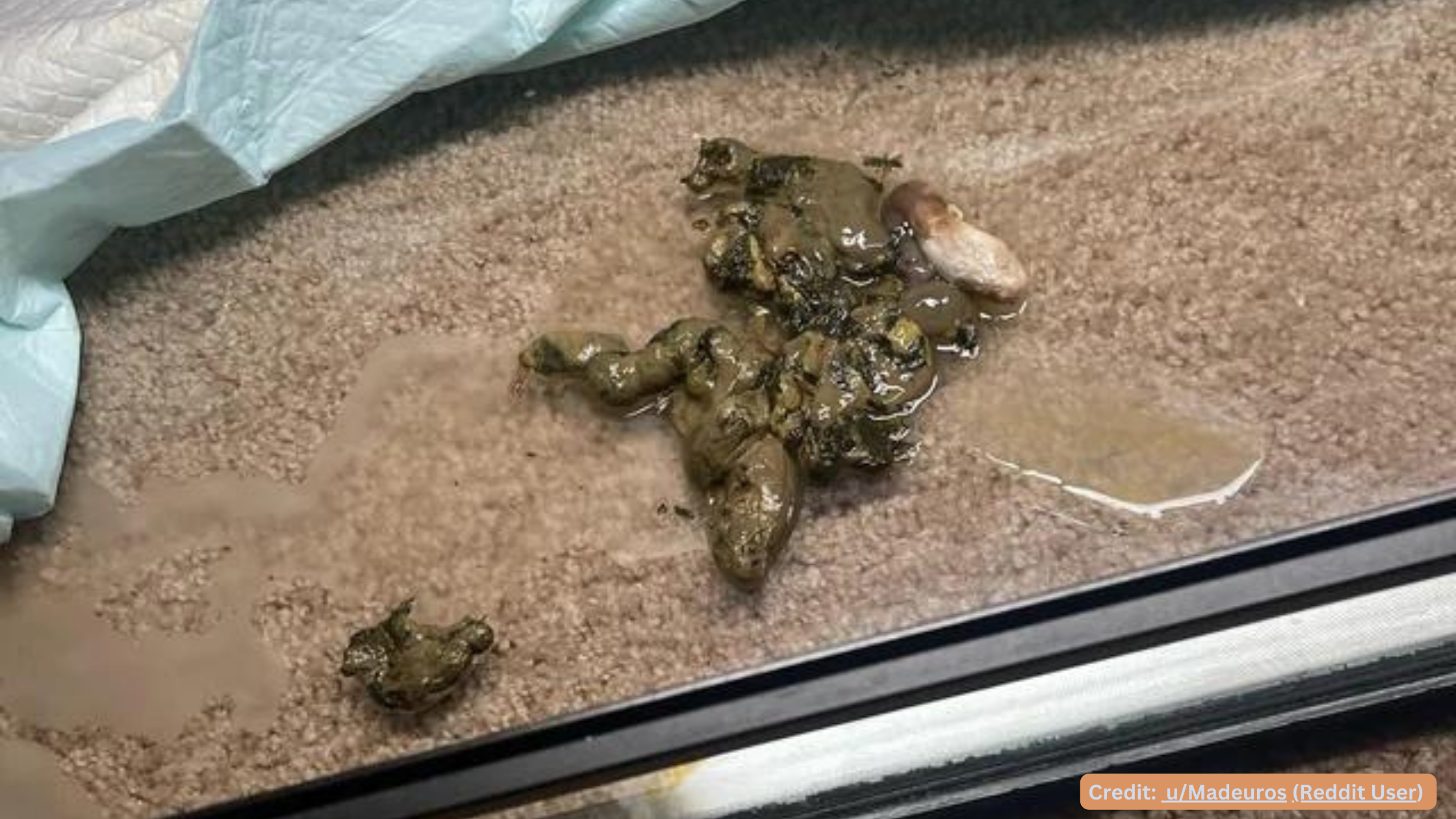
Want to know more about what undigested bearded dragon poop might look like? Get your answer right away from the image above. This could be due to fluctuating temperatures.
It’s something that can occasionally happen with any captive beardies. However, if it’s becoming a frequent occurrence, consider resetting the bearded dragon tank temperature.
Also, make sure to consistently monitor and maintain the bearded dragon temperature at night on the right settings.
Incorrect temperatures can seriously impact your pet’s vital organ function, so stay ahead and understand what temperature will kill a bearded dragon.
Image Source & Credit: u/Madeuros (Contact us For Content Removal or Proper Credit Where It’s Due)

If you discover bearded dragon orange poop, the following could be the reasons:
- Eating anything orange-colored foods, such as carrots.
- Possibly overfeeding. Watch out for bearded dragon treats or live insects like horn worms for bearded dragons.
- Evaluate the water content in your pet’s greens.
- Excessive or prolonged bathing
- If the urate appears orange-ish, refer to information on orange urate bearded dragons here.
Image Source & Credit: u/Healthy_Wealth1941 (Contact us For Content Removal or Proper Credit Where It’s Due)

The image intends to show Beardie’s watery, unformed poop that can be caused by multiple factors, like:
- Feeding bearded dragon crickets, that are dead or store-bought may lead to this issue. Advisable to stick with live crickets for bearded dragons.
- Bearded dragon watery poop may also result from multiple factors, including overhydration, parasites, or coccidia.
- Excessive amounts or the wrong type of greens could be the culprit. Learn what greens can bearded dragons eat and choose the ones that best suit your beardie’s health & taste
Image Source & Credit: u/MediocreOctopus (Contact us For Content Removal or Proper Credit Where It’s Due)
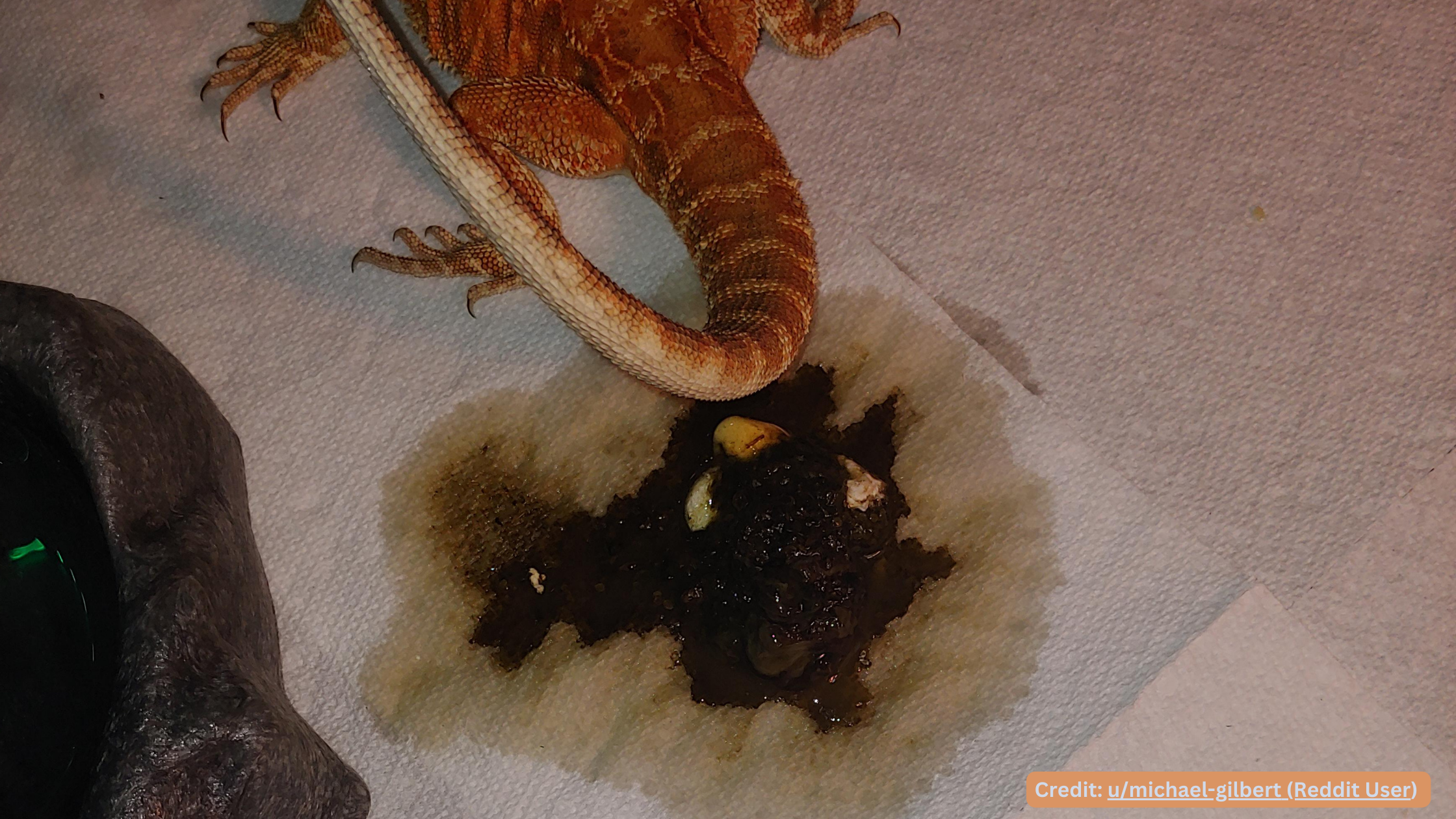
Observing feces that are dark and watery to this extent is often a telltale sign of parasites. However, bearded dragon black poop may also various health issues, such as:
- Predominant intake of insects over vegetables causes dark stool too due to the melanin in insects.
- Maybe, your dragon’s diet lacks enough fiber.
- Problems like ulcers, tumors, or injuries may cause internal bleeding, leading to dark stool
Image Source & Credit: u/michael-gilbert (Contact us For Content Removal or Proper Credit Where It’s Due)

As you can see, the beardie’s poop appears a bit reddish, possibly resembling beets or raspberries. But,
If you observe this type of feces but haven’t fed your pet any red-dyed food, it is advisable to take your pet to the nearest vet. Finding blood in bearded dragon poop indicates a serious emergency.
Sometimes, it can result from a high load of parasites and eggs, requiring treatment over approximately three weeks. Periodically, a small amount of blood may indicate a dehydrated bearded dragon or, alternatively, an internal rupture
Image Source & Credit: u/Delicious-Date3183 (Contact us For Content Removal or Proper Credit Where It’s Due)

If none of the food you’ve given your pet contains red or orange pigments, but you find blood in bearded dragon poop, contact the vet!
However, please be aware that we’ve sometimes observed an orangish color between the feces and the urate.
Image Source & Credit: VivaLaRobo (Bearded dragon forum’s User) (Contact us For Content Removal or Proper Credit Where It’s Due)

The bearded dragon watery poop with red dye indicates something serious. Be quick to collect a sample and request testing to ensure there are no issues in the digestive system.
Image Source & Credit: u/Aliashavinn (Contact us For Content Removal or Proper Credit Where It’s Due)

If you examine the stool itself, it’s not watery at all. There are solid feces, urates, and then a pool of water.
Image Source & Credit: u/Kelseylyrix (Contact us For Content Removal or Proper Credit Where It’s Due)
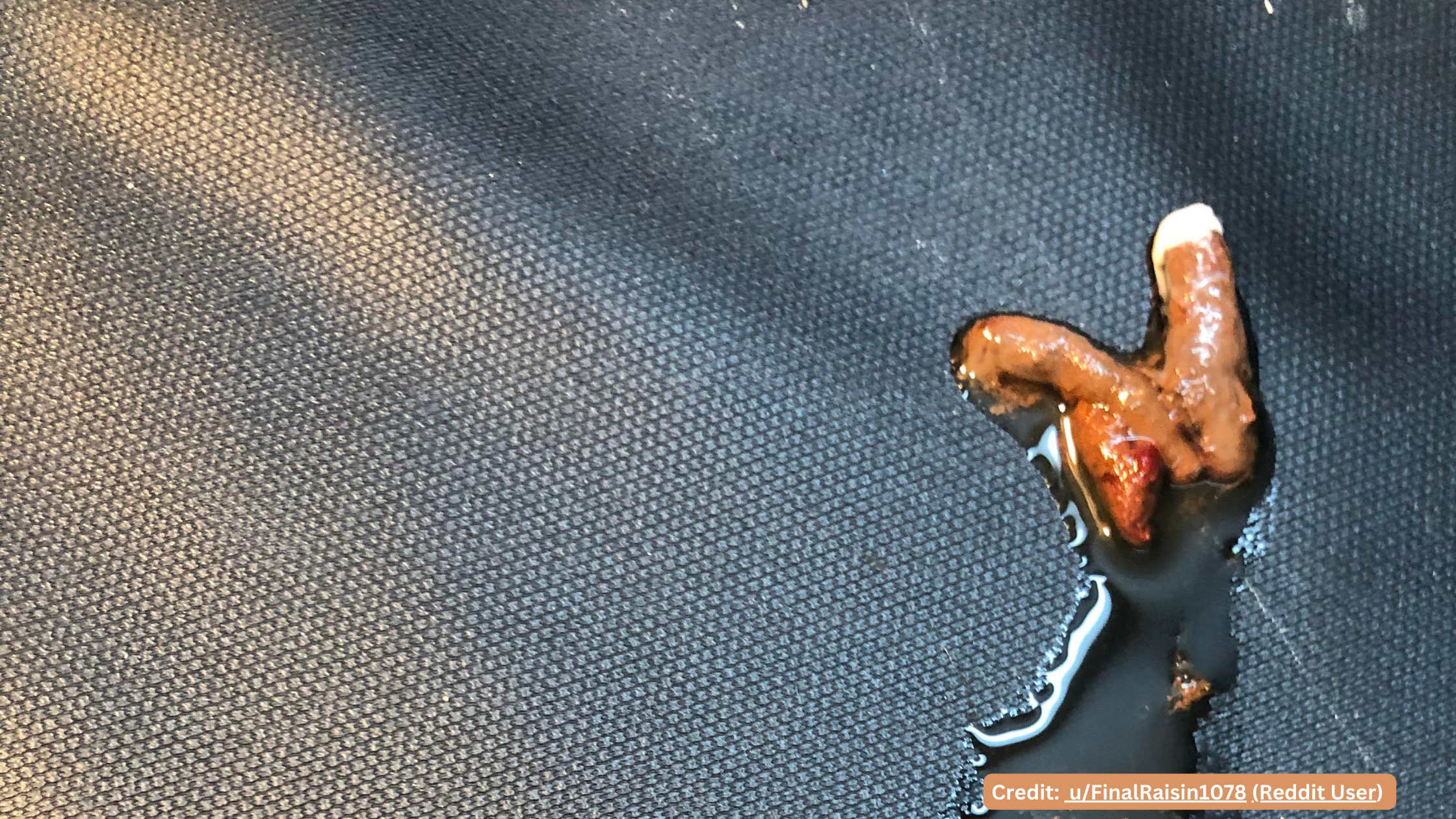
Offering/Feeding too much of bell peppers may cause kind type of poop color & texture.
Image Source & Credit: u/FinalRaisin1078 (Contact us For Content Removal or Proper Credit Where It’s Due)
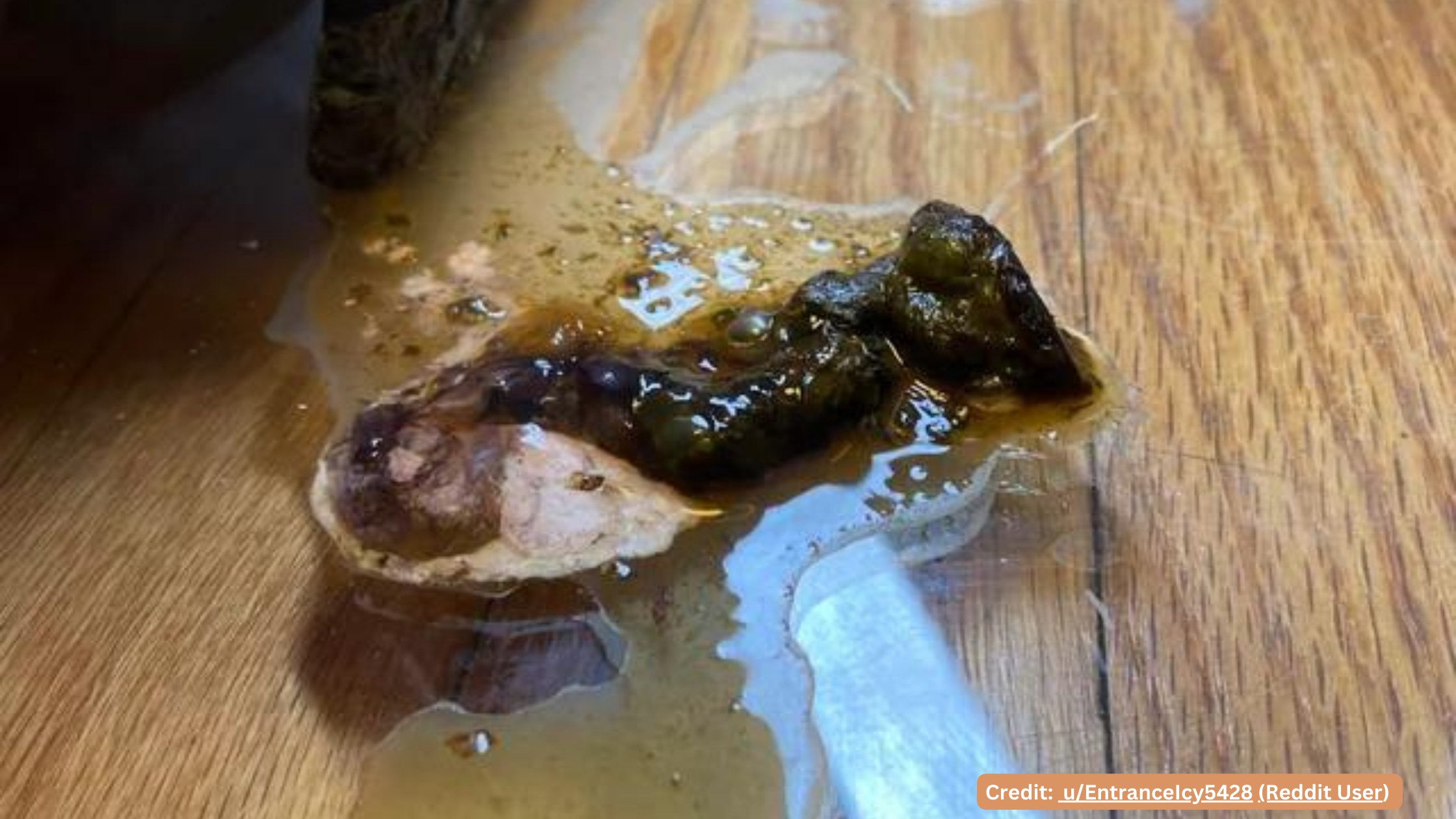
This is what a bearded dragon’s diarrhea could look like.
Image Source & Credit: u/EntranceIcy5428 (Contact us For Content Removal or Proper Credit Where It’s Due)

A well-hydrated, healthy bearded dragon poop looks like this!
Image Source & Credit: u/Aggressive-Let831 (Contact us For Content Removal or Proper Credit Where It’s Due)

Some may believe it’s blood, but it’s not. At times, a few people also confuse it with bearded dragon red urate. In reality, the pink part isn’t blood; it’s just an “irritation” caused by parasites. Any bearded dragon poop with parasites necessitates medical and professional care.
Image Source & Credit: u/PajamaStripes (Contact us For Content Removal or Proper Credit Where It’s Due)

If you haven’t given your dragon anything red lately, there’s definitely something going on. Consider collecting a sample to thoroughly investigate. Ask your nearest vet clinic to run tests to ensure there’s nothing problematic in the digestive system.
Image Source & Credit: u/Aliashavinn (Contact us For Content Removal or Proper Credit Where It’s Due)

The beardie pictured above is experiencing bloody stools. Instead of wondering why is there blood in my bearded dragons poop, an owner should take it to the nearest vet clinic, asap.
This condition is often caused by a high number of parasites and egg-related problems. The beardie in the picture received overnight treatment with fluids and underwent tests. It was treated for parasites over a period of about three weeks, during which it had a minimal appetite for months.
Image Source & Credit: u/Delicious-Date3183 (Contact us For Content Removal or Proper Credit Where It’s Due)

Take a look at this picture – this bearded dragon just passed an entire, undigested mealworm. But not all worms are good for beardies. In fact, many can lead to issues like impaction or even diarrhea.
Mealworms, in particular, are known culprits for causing impaction. If you’re on the lookout for the best worms for bearded dragons, be sure to check out this helpful guide.
Image Source & Credit: u/TheCupcakeofEmotions (Contact us For Content Removal or Proper Credit Where It’s Due)

As you can see, there is too much-undigested food in bearded dragon poop. I recommend checking the bearded dragon tank temperature.
Make sure to pay attention to the nighttime temperature for bearded dragons as well. Inadequate heat and temperatures that are too low can lead to a lack of digestion
Image Source & Credit: u/DrewChrist87 (Contact us For Content Removal or Proper Credit Where It’s Due)

After impaction, it’s normal for beardies to pass stool like this, but this poop texture also suggests that he’s not digesting properly.
An update of lighting and UVB should help.
Image Source & Credit: u/Ok-Mousse-9717 (Contact us For Content Removal or Proper Credit Where It’s Due)
Bearded Dragon Poop Pictures (Newly Added)

Credit: u/SunGirl42 (Contact Us)

Credit: u/Tahmya2001 (Contact Us)

Credit: u/Old-Internet-7372 (Contact Us)
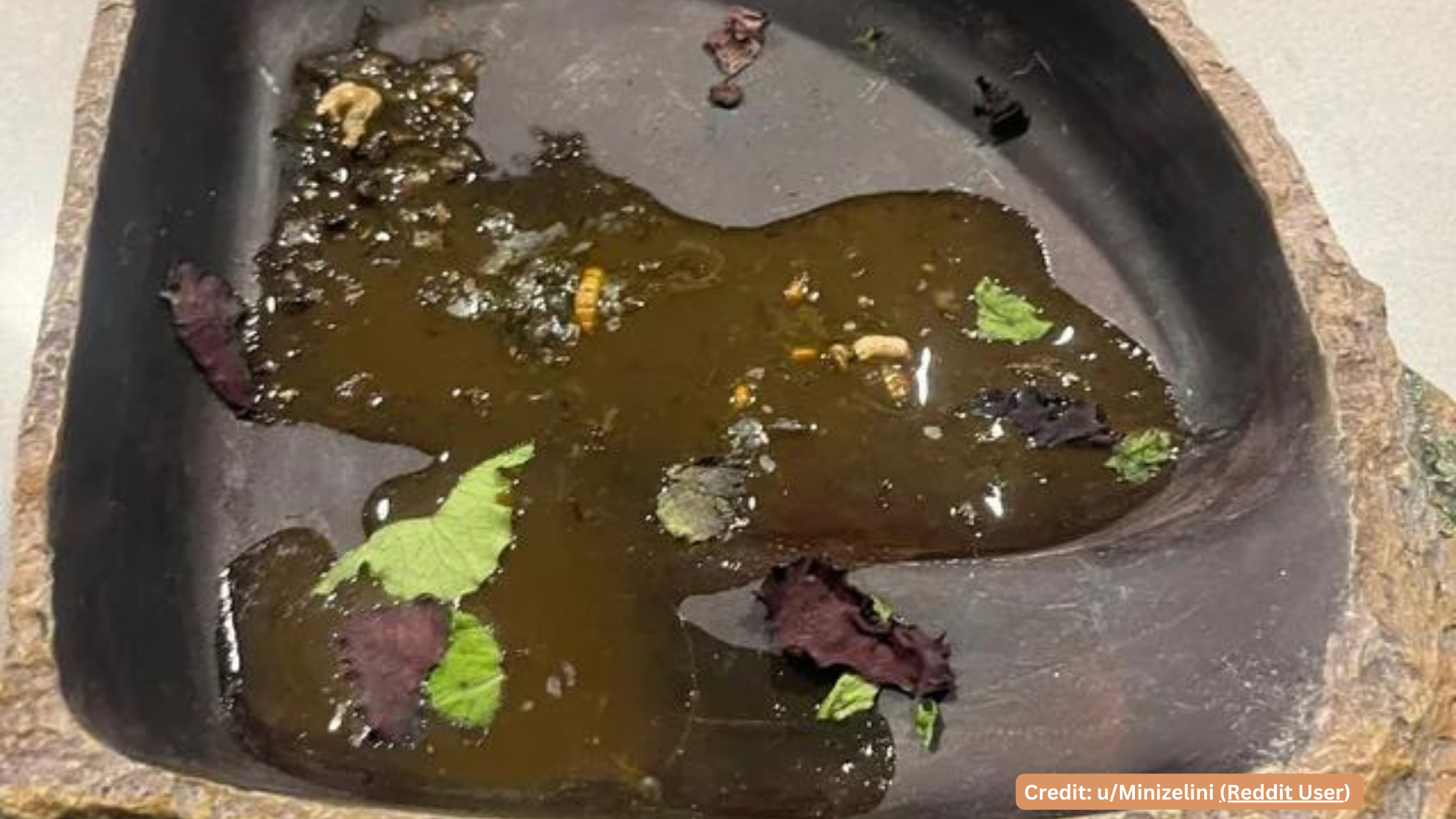
Credit: u/Minizelini (Contact Us)
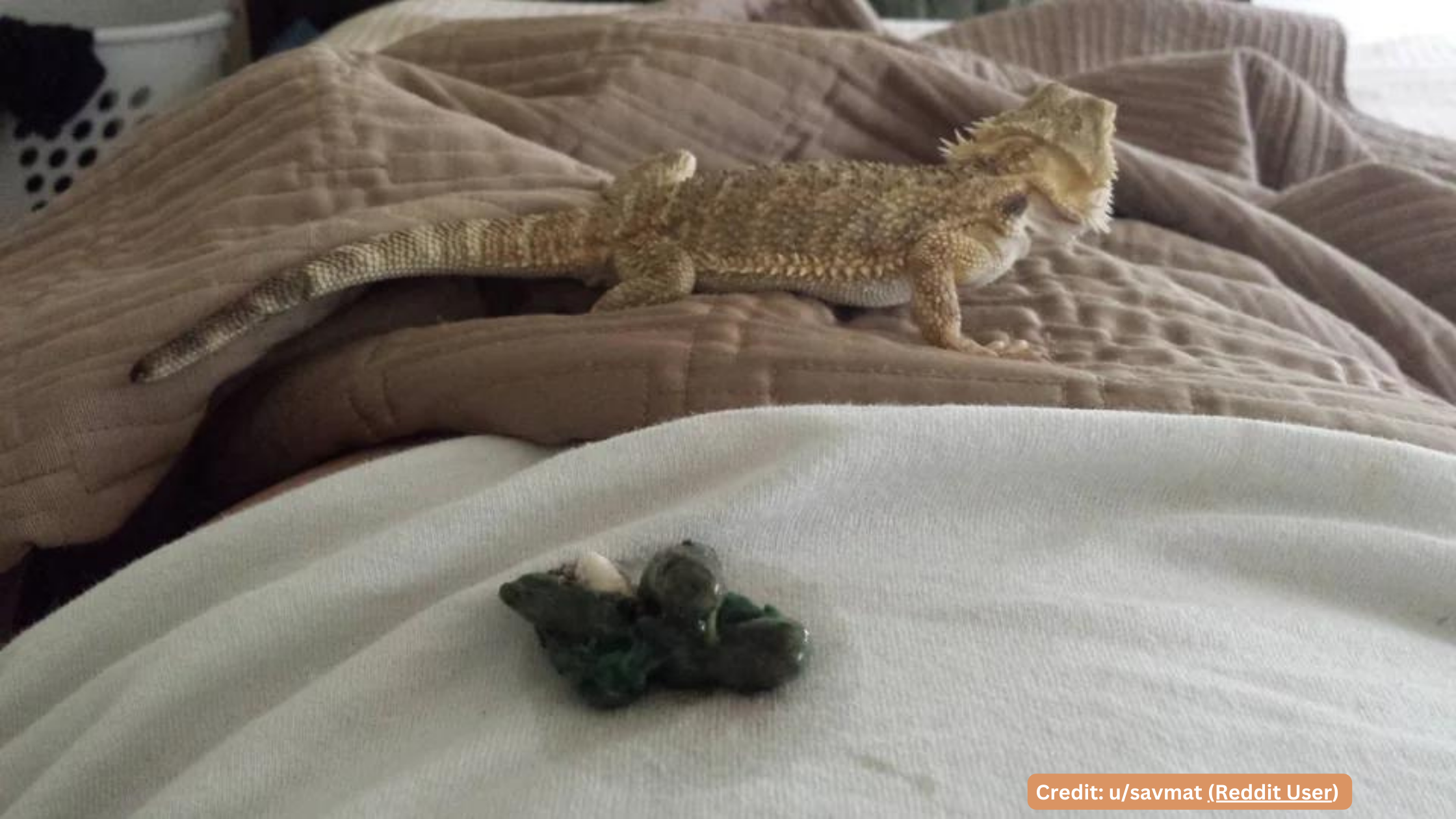
Credit: u/savmat (Contact Us)
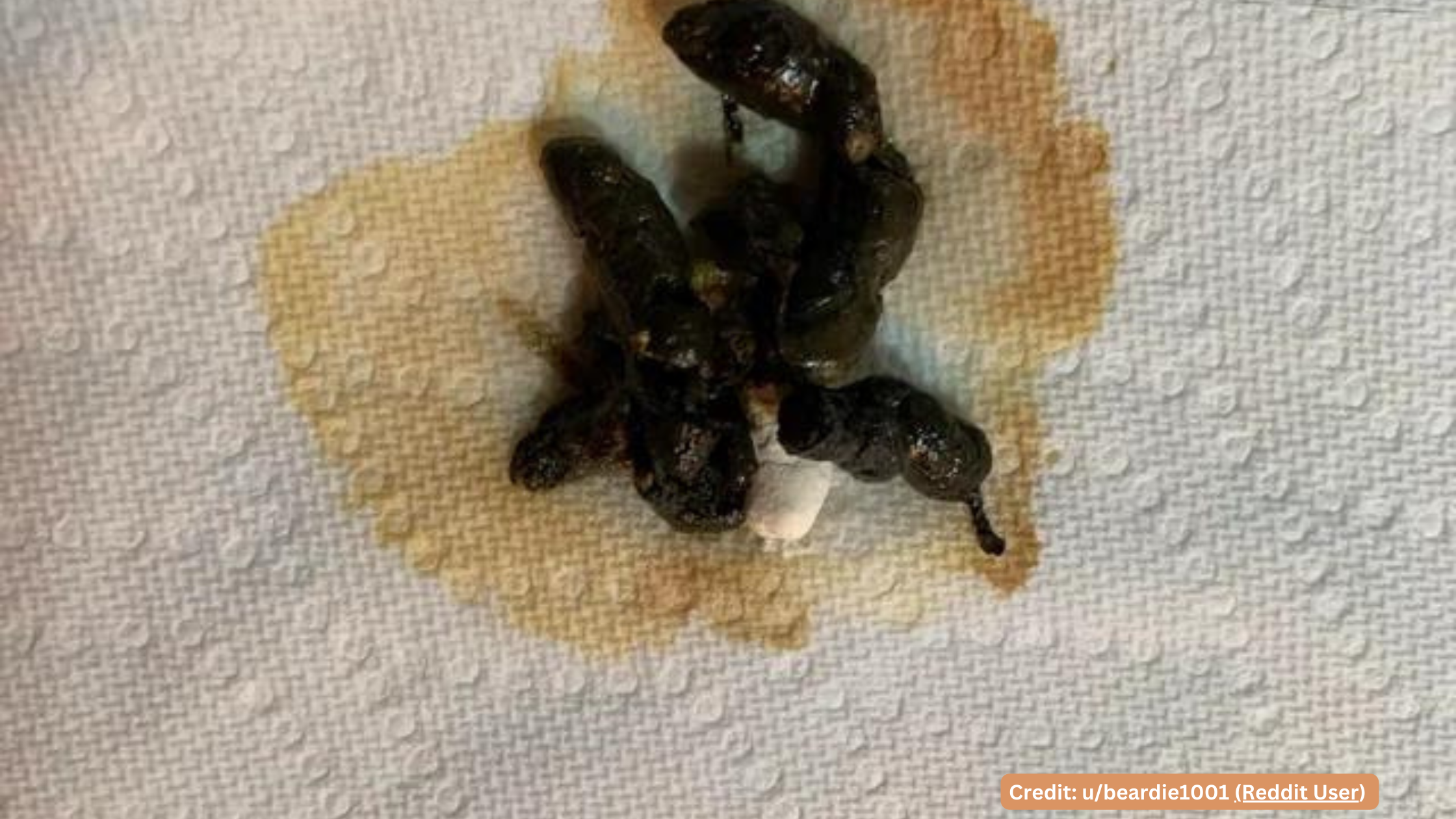
Credit: u/beardie1001 (Contact Us)

Credit: u/sunmtndew (Contact Us)

Credit: u/Creative_0wl (Contact Us)

Credit: u/Kpost12 (Contact Us)

Credit: u/kyledubb87 (Contact Us)

Credit: u/trs6910 (Contact Us)

Credit: u/MissPuffBeardie19 (Contact Us)

Credit: u/BallsinyoJaws44 (Contact Us)
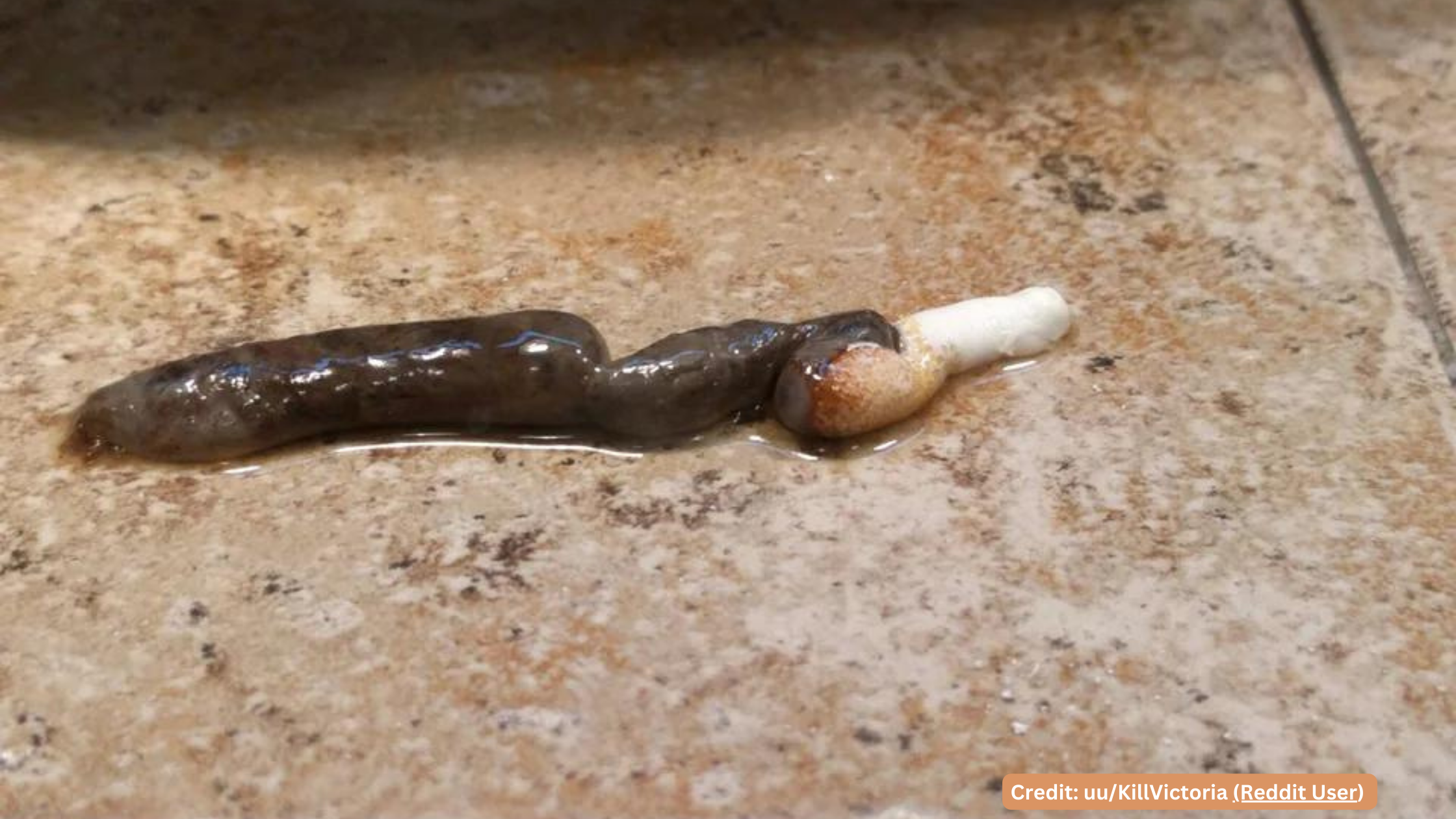
Credit: u/KillVictoria (Contact Us)

Credit: u/hayz999 (Contact Us)

Credit: u/Deliciousfingies (Contact Us)
All rights to the respective owners. If any of the images shown here cause harm or anyone feels they should be removed, please reach out to us. We appreciate and thank the respective owners for contributing to the educational content. If any information appears misleading, contact us for updates.

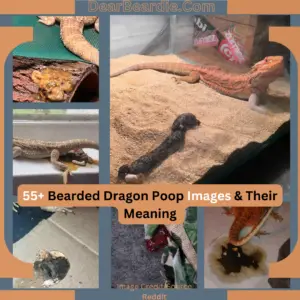
Leave a Reply